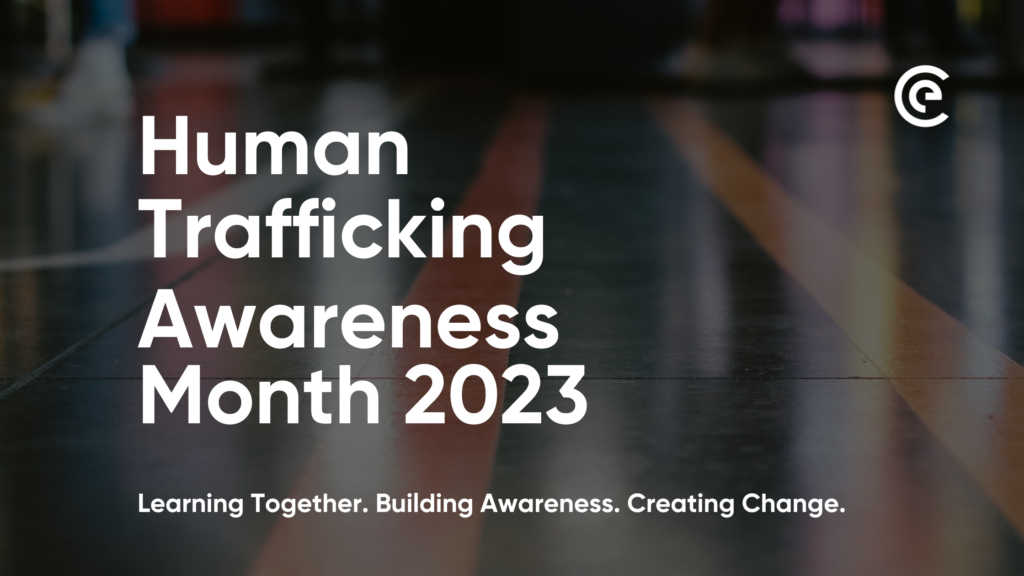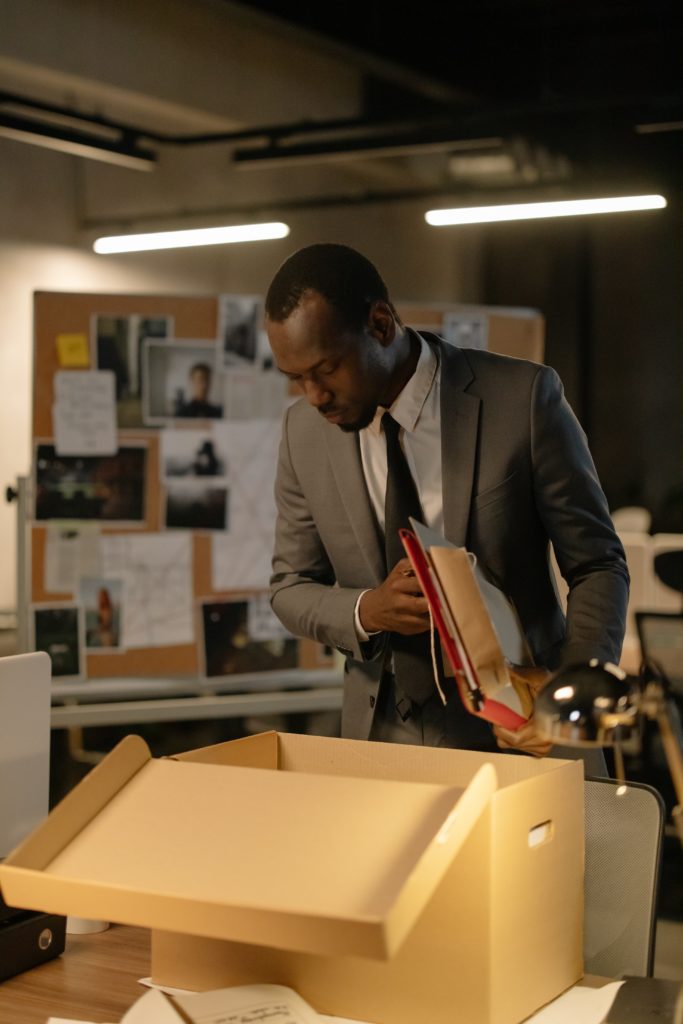
Human Trafficking: Why Updated Tech Matters
According to the Bureau of Justice Statistics, “a total of 2,198 persons were referred to U.S. attorneys for human trafficking in offenses in fiscal year 2020, a 62% increase from the 1,360 persons referred in 2011.”
In 2021, the U.S. National Human Trafficking Hotline received 10,359 reports of human trafficking situations involving 16,554 victims.
As human trafficking continues to be a pressing issue across the United States, organizations throughout the country agree that there are many persisting, harmful myths about human trafficking.
In this blog post, we’ll be exploring how updated technology can revolutionize human trafficking investigation and prosecution. Additionally, we’ll examine how myths about human trafficking harm victims and spread misinformation.
The Realities of Human Trafficking in the United States
The Department of Homeland Security, among other agencies and organizations, has dedicated a page on its website to debunking myths about human trafficking.
One myth is that human trafficking doesn’t happen in the United States at all (which we can easily disprove with the data above). Another myth is that victims of human trafficking are always either-foreign born individuals or poor individuals. DHS explains that human trafficking victims can be of any age, race, gender, nationality, or socioeconomic background.
Polaris, which operates the U.S. National Human Trafficking Hotline, identified the myth that many people believe that traffickers primarily target victims they don’t know. Instead, the organization explained that many survivors have been trafficked by romantic partners, spouses, family members, and/or parents. Their website also includes a list of numerous other common myths linked here.
The CivicEye Team spoke with Mary Kate Waggoner, Summit Regional Human Trafficking Task Force Coordinator with RAHAB Ministries, and Public Awareness Subcommittee Member with the Ohio Attorney General’s Office.
Waggoner explained that many people don’t understand the relational aspect of trafficking.
“Much of media glamorizes, rather than illuminates, the realities of human trafficking. This not only spreads misinformation but also can re-traumatize survivors. The language we use is so important,” Waggoner said.
Polaris has additional resources on the truths behind human trafficking in the United States. They also offer an in-depth Human Trafficking Awareness Training course.
Outdated Technology is Slowing Down Justice
As law enforcement, prosecution, and advocates work alongside one another to solve human trafficking cases, there are two key factors officials need: time and partners.
One of the biggest barriers to these factors? Outdated tech.
When compiling evidence, investigators and prosecutors can handle upwards of 1,000 to 10,000 pieces of evidence. For example, if a cell phone is confiscated, every photo from the cell phone alone (which could number in the thousands) often needs to be documented. When prosecutors are still relying on physical means of evidence documentation, this can translate to binders upon binders of paper files for just a single case.
Additionally, sometimes within even the same county, local agencies don’t have access to the same records. This creates double, if not triple, the work for all parties, as they’re forced to track down information, suspects, and records from various sources.
Considering the national staffing shortages across law enforcement agencies and prosecution offices, this is wasted time that officials can’t afford to spare. Sometimes, agencies will work on the same investigation as another agency without even realizing it.
Outdated technology, or the lack of digital evidence management systems (DEMS), forces officials to rely on physical files and transportation. These physical files can be misplaced, require transportation, and are challenging to sift through at high volumes.
The CivicEye Team had the opportunity to speak with David Rausch, Director of the Tennessee Bureau of Investigations (TBI) to learn more. We discussed how outdated technology specifically impacts human trafficking cases.
“Technology makes all the difference when investigating human trafficking. The right software, matched with the right training, helps us better focus resources and maximize efforts, which ultimately leads to better outcomes. In trafficking cases, that means we’re able to help more victims become survivors while working to hold more buyers and traffickers accountable,” Rausch explained.
As technology continues to grow at astonishing rates, it’s high time that law enforcement and prosecution officials can harness these tools for their necessary work.

The Benefits of Shared Data through Updated RMS, DEMS, and PCMS
In each step of the criminal justice system, officials can benefit from updated, modern technology. Let’s further explore three types of software that can support law enforcement, prosecutors, and courtroom officials.
Updated RMS
As we mentioned above, many law enforcement agencies do not share records with one another. This is common, even if agencies are nearby neighbors (or, often, in the same county). With an updated records management system, such as CivicRMS, law enforcement officials can instantly share records across jurisdictions. Powerful search tools allow users to search through thousands of documents within seconds. Additionally, auto-populated fields prevent users from having to re-enter the same information over and over.
CivicRMS also seamlessly integrates with existing CAD and JMS. This allows users to access jail and dispatch information all in the same, streamlined platform.
Updated DEMS
Digital Evidence Management Systems (DEMS) allow prosecutors and law enforcement alike to manage evidence digitally. Cloud-based platforms, such as CivicEye’s CivicDocs, securely store information, so users can access information anytime, anywhere.
DEMS like CivicDocs can preserve chain-of-evidence, with detailed audit logs that pinpoint the time, date, and location that documents were accessed via IP addresses. These tools allow prosecutors to easily disclose discovery and document the process.
Similar to CivicRMS, CivicDocs features powerful search tools, alongside a distribution tool, secure archiving, and cold-case document repository. Cloud-based platforms are not only secure but also can easily store large media, such as body and dash cam video. Users can upload individual files or folders, or entire directory trees, instantly.
Additionally, CivicDocs provides unique login portals for each party, so users outside of the platform can securely access information released to them.

Updated PCMS
Prosecutor Case Management Systems (PCMS) are designed to streamline all prosecutorial processes. Primarily, PCMS are designed to track and manage cases, while also improving accuracy and minimizing paperwork. Prosecutors can save time by avoiding redundant data entry, while also navigating cases throughout each step of prosecution.
CivicCase, CivicEye’s PCMS, allows prosecutors to organize cases from the start to the end of the legal process. Alongside managing cases, users can create digital, interactive forms with pixel-perfect form rendering to match originals.
Like CivicRMS and CivicDocs, CivicCase utilizes modern cloud technology to allow prosecutors to work from anywhere. CivicCase integrates with records management and digital evidence documentation software to expedite the typical administrative workflows that exist through discovery. These capabilities allow for controlled access of information that should be easily shared throughout the legal process.
Additional Resources to Learn More about Human Trafficking
It can feel daunting when confronting the large statistics of human trafficking across the nation. But each of us can learn about the warning signs of human trafficking and how to potentially spot and aid victims.
The National Human Trafficking Hotline has various educational resources on its website, including its webpage that details how to recognize the signs of human trafficking.
Additionally, CivicEye had the opportunity to speak with Ricky Lynn, former Human Trafficking Investigator with Kentucky Attorney General’s Office. Lynn encouraged folks to watch “The One,” an educational video on human trafficking created by the Attorney General of Texas. While the video is lengthy, at about 50 minutes, it includes detailed information on labor, commercial, and sex trafficking. Additionally, the video includes interviews with survivors, who share their lived experiences.
Alongside Polaris’s Human Trafficking Awareness Training that we mentioned earlier, the organization also offers ample resources. Also, many of these learning tools are specifically designed for geographic locations throughout the country.
There are many other organizations, too, that are relentlessly working to end human trafficking. Thorn was specifically created to end child human trafficking, and their team has worked to create Spotlight, a technology that specifically helps locate child victims.
On their blog, Thorn also offers various tools, resources, and news to keep advocates informed of trends in human trafficking. Organizations like Thorn are invaluable resources, specifically because they center victims’ lived experiences in all that they do.
Similar to Thorn, Child Rescue Coalition (CRC) is an organization that works to end child sexual abuse. Specifically, the organization does this through technology designed for law enforcement use. CRC also provides numerous resources on its website—many of which are designed for parents and guardians to educate and protect their children from dangerous online behavior.
In our interview with Ricky Lynn, he also emphasized the importance of parents monitoring their children’s online behavior, and organizations like CRC have created roundup lists of apps that parents can use to protect kids digitally.
Takeaways
Human trafficking is a problem across the entire United States, but community members, advocates, law enforcement, and prosecution can work together to create change. By educating ourselves about human trafficking, we can look for warning signs of human trafficking in our communities, spread awareness locally, and continue to support organizations that are protecting survivors.
Prosecutors and law enforcement—as they continue to work together to secure justice for victims and end human trafficking—can’t continue to rely on cumbersome, outdated methods of evidence documentation, case management, and records management. By upgrading to modern technology, public safety officials can work more efficiently, protect more victims, and close more cases.
As organizations such as Thorn and Child Rescue Coalition create technological tools that help investigators locate victims and prosecute criminals, make sure your agency has technology that can integrate with these vital tools.
GET IN TOUCH
To learn more about CivicRMS and schedule a demo, click here.
STAY IN THE LOOP
Follow CivicEye on LinkedIn – Facebook – Instagram – Twitter – YouTube.

